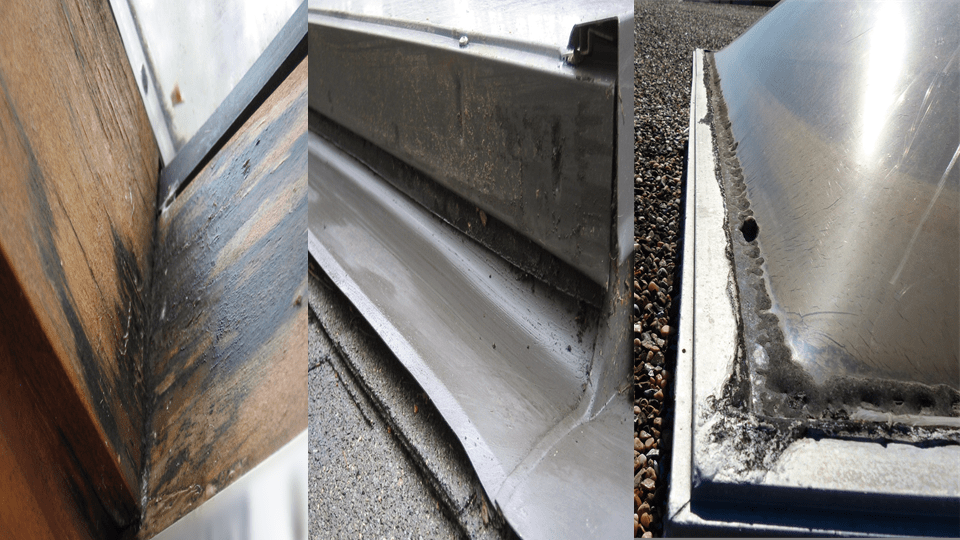
A hailstorm is any thunderstorm that produces hail reaching the ground with a diameter of at least 0.2 inches. However, hailstones can reach a diameter of six inches and weigh up to 1.1 pounds. Hailstorms are most common near the intersection of Colorado, Nebraska, and Wyoming, which is commonly known as “Hail Alley.” The majority of hailstorms in this area occur from May through September, with Cheyenne, Wyoming averaging nearly 10 hailstorms per season.
Skylights can be vulnerable to hail damage, depending on the materials used in its construction. The skylight itself is generally made from tempered glass or some type of acrylic polymer, while the framing is usually made of wood, metal, vinyl, or a combination of these materials. Vtech skylights are manufactured with a unique process that makes them much more resistant to hail damage than other skylights.
Metal Frames
Hail can cause “cosmetic” dents in metal skylight framing and may also reduce the skylight’s lifespan. Damage to the seams between the metal frame and the glazing can lead to leaks that cause further damage requiring repair or replacement. Protecting your metal-framed skylights from hail damage can be an arduous task that involves covering your skylights with a tarp, blankets, or even wooden boards. You may also need to install metal cages over these skylights to deter damage, depending on the severity of the storm. However, you have better options for preventing hail damage.
Aluminum
Aluminum is one of the least expensive of all the available materials for framing skylights. Aluminum is an excellent conductor of energy, so it can rapidly transfer heat from a warm humid condition outdoors to a cool condition indoors or vice versa. This process can cause condensation to form on the frame, which is why you shouldn’t use aluminum frames in areas with high humidity or when energy efficiency is a primary consideration. Aluminum is a soft metal, making these frames more vulnerable to hail damage than steel frames.
PVC
Frames made from polyvinyl chloride (PVC) use an extruded high-impact exterior grade of this material. These frames also have a bronze cap stock co-extruded on the exterior to screen out ultraviolet (UV) radiation and a white finish on the interior. PVC frames can be very vulnerable to damage from even small hailstones, especially as they age. They can also shatter when they break, creating a safety hazard.
RIM Process Frames
Vtech Skylights use a framing process known as Reaction Injection Molding (RIM). This process involves the mixing of certain chemical components to create an aliphatic polyurethane framing structure. This liquid material is injected into a heated steel mold where it flows around the glass, bonding the two together. The polyurethane takes the shape of the frames and quickly cools into a single piece solid-state skylight that’s highly durable and somewhat flexible as well. This process assures hail and leak-proof reliability and provides a 20-year transferrable warranty.
Insurance
Homeowners who have experienced hail-damaged roofs and skylights say that hail is the element that can turn a “bad” storm into a significant financial expense. Impact-resistant roofing materials make your roof more durable, especially if you live in an area prone to hail. Upgrading to these materials may even qualify your roof for a discount on your homeowner’s insurance, depending on your state.
Impact-resistant roofing materials have a Class 4 rating, meaning they can withstand the most severe hailstorms. For tests conducted by Underwriters Laboratories (UL), steel balls of various sizes are dropped onto roof coverings. FM Approvals perform these tests by firing solid balls of ice into the test material.
Summary
In summary, there are several options available to anyone looking to add additional daylighting or replace damaged skylights to any commercial industrial or residential roof. Tests show that Vtech’s superior durability far outlasts traditional skylights and are maintenance-free. Contact our team of friendly professionals today to learn more.